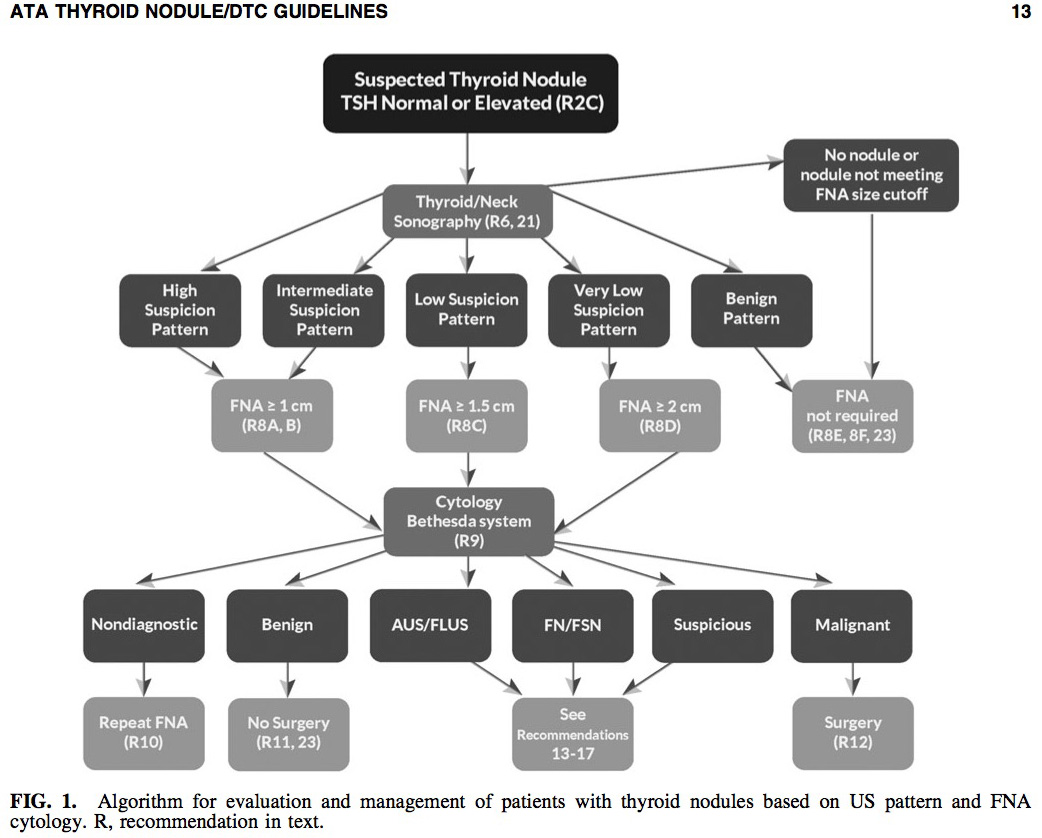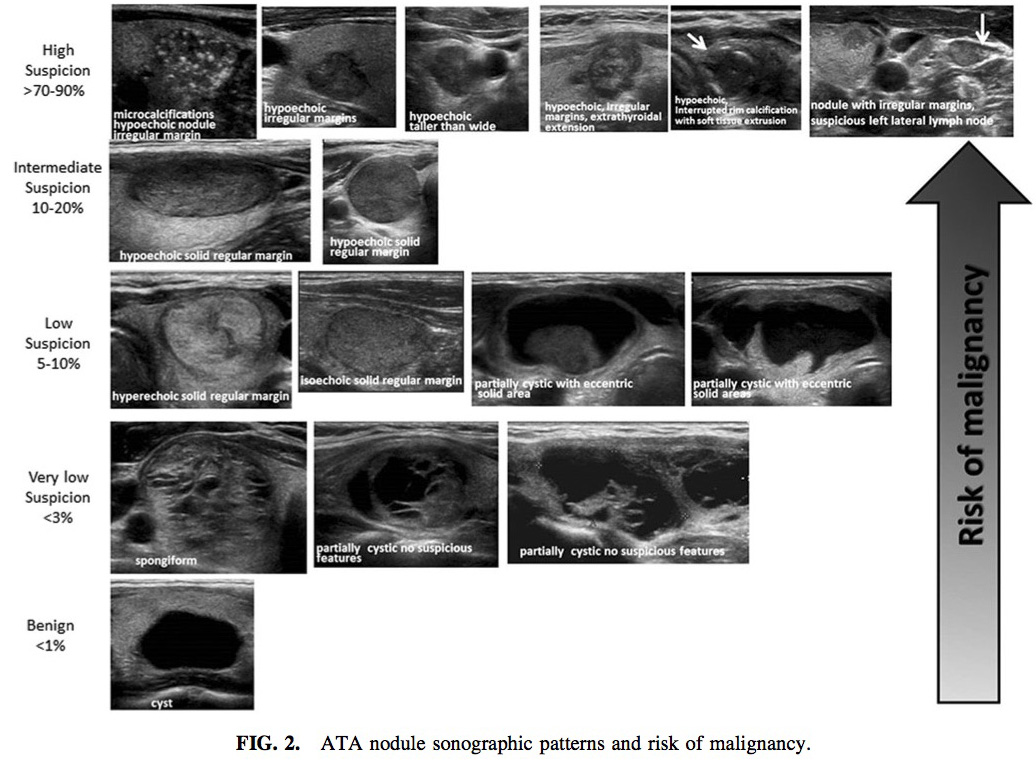Managing Incidental Thyroid Nodules Detected on Imaging:
|
|||||||
 |
| Flowchart for incidental thyroid nodules (ITNs) detected on CT or MRI. (1) The recommendations are offered as general guidance and do not apply to all patients, such as those with clinical risk factors for thyroid cancer. (2) Suspicious CT/MRI features include: abnormal lymph nodes and/or invasion of local tissues by the thyroid nodule. Abnormal lymph node features include: calcifications, cystic components, and/or increased enhancement. Nodal enlargement is less specific for thyroid cancer metastases, but further evaluation could be considered if an ITN has ipsilateral nodes >1.5 cm in short axis for jugulodigastric lymph nodes, and >1 cm for other lymph nodes. (3) Limited life expectancy and comorbidities that increase the risk of treatment or are more likely to cause morbidity and mortality than the thyroid cancer itself, given the nodule size; see text for details. Patients with comorbidities or limited life expectancy should not have further evaluation of the ITN, unless it is warranted clinically, or specifically requested by the patient or referring physician. (4) Further management of the ITN after thyroid ultrasound, including fine-needle aspiration, should be based on ultrasound findings. |
 |
| Flowchart for incidental thyroid nodules (ITNs) detected on 18FDG-PET and other nuclear medicine studies. (1) The recommendations are offered as general guidance and do not apply to all patients, such as those with clinical risk factors for thyroid cancer. (2) Focal uptake may include one or more sites. Diffuse uptake in the thyroid without a corresponding mass is not considered to be focal. (3) Limited life expectancy and comorbidities that increase the risk of treatment or are more likely to cause morbidity and mortality than the thyroid cancer itself, given the nodule size; see text for details. Patients with comorbidities or limited life expectancy should not have further evaluation of the ITN, unless it is warranted clinically, or specifically requested by the patient or referring physician. (4) Further management of the ITN after thyroid ultrasound should include fine-needle aspiration for PET-avid ITN regardless of the ultrasound findings; see text for details. Avid nodules on other nuclear medicine scans can have ultrasound with the decision to perform FNA based on findings seen on the dedicated thyroid ultrasound. |
 |
| Flowchart for incidental thyroid nodules (ITNs) detected on ultrasound for extrathyroidal structures. (1) The recommendations are offered as general guidance and do not apply to all patients, such as those with clinical risk factors for thyroid cancer. (2) Suspicious ultrasound features include microcalcifications, marked hypoechogenicity, lobulated or irregular margins, and taller-than-wide shape on transverse view. In most cases, suspicious features may not be completely evaluated. (3) Limited life expectancy and comorbidities that increase the risk of treatment or are more likely to cause morbidity and mortality than the thyroid cancer itself, given the nodule size; see text for details. Patients with comorbidities or limited life expectancy should not have further evaluation of the ITN, unless it is warranted clinically, or specifically requested by the patient or referring physician. (4) Further management of the ITN, including fine-needle aspiration, should be based on the findings seen on the dedicated thyroid ultrasound. |


Haugen, Alexander, et al.,
Thyroid. Jan 2016, 26(1): 1-133.
DOI: 10.1089/thy.2015.0020